 She's someone you really don't want to cross. 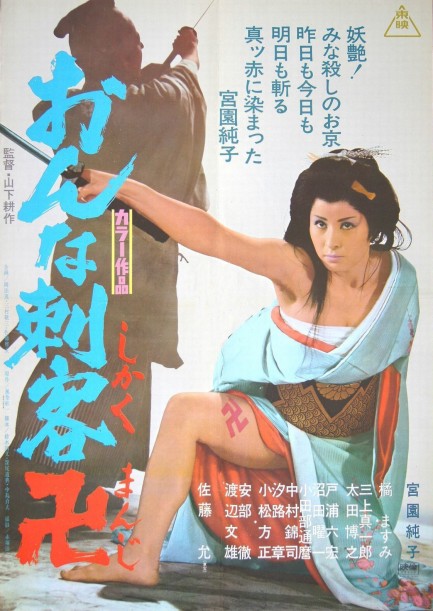 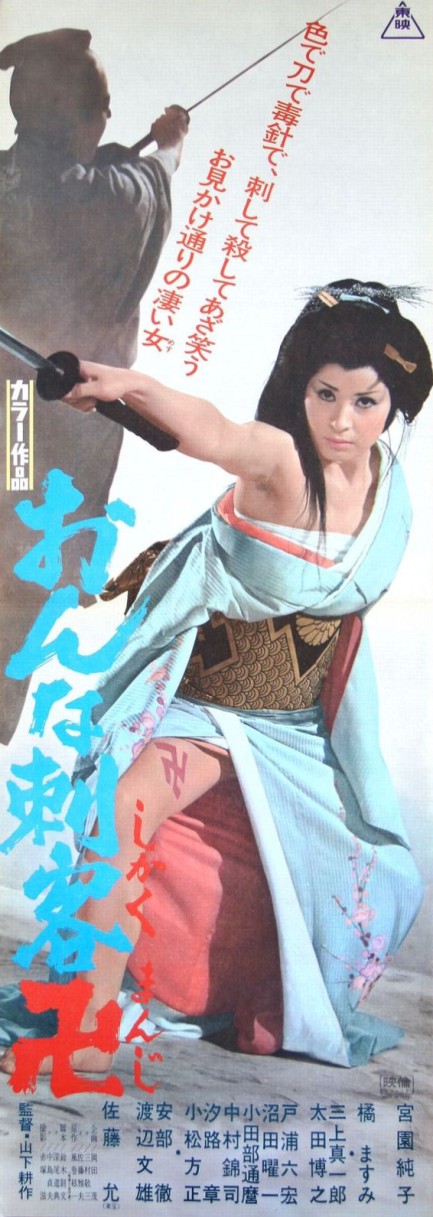
Above: two excellent posters for Onna shikaku manji, aka Mankiller, aka Eternal Killer Woman, which premiered today in 1969 starring Junko Miyazuno. You notice the swastika-looking graphic and the simlar tattoo on Junko's thigh? It's actually a symbol that predates Adolf and the Hitlerians, as we explained a while back at this post. We've had these posters for several years but had no luck finding the movie, so we finally gave up and decided to just upload the art. We think it's worth sharing even without info about the film, and hopefully you think so too.
 She wasn't really all that nice even before the demon showed up. 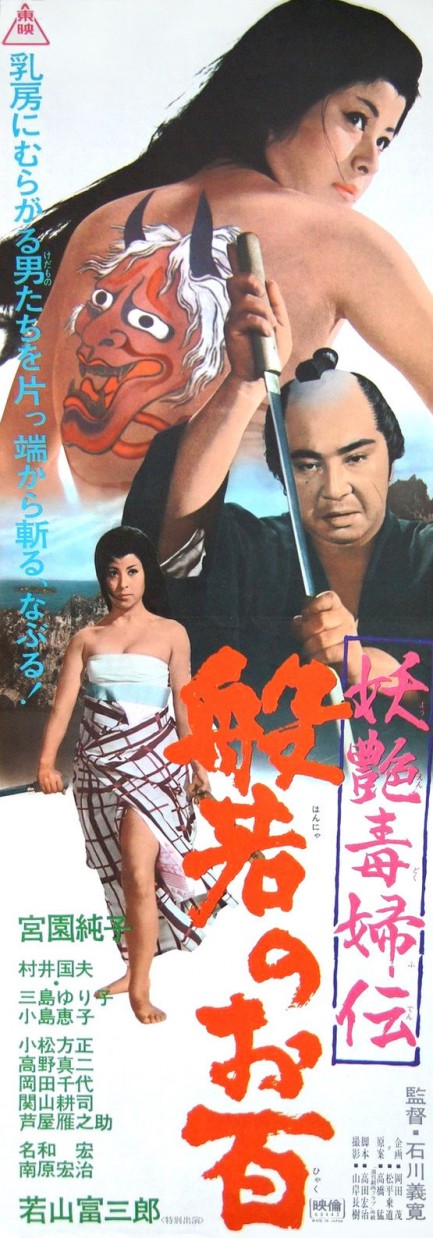
The tateken style poster you see above was made for the Japanese actioner Yôen dokufu-den: Han'nya no Ohyaku, aka Ohyaku: The Female Demon, set in Edo era Japan, and starring Junko Miyazono, Tomisaburô Wakayama, and Kunio Murai. Miyazono plays woman who as little girl survived when her prostitute mother jumped with her off a bridge, and as an adult carries a scar on her back from this traumatic suicide. She's grown up to be an acrobat, but is treated shabbily by men just as her mother was.
She flees her circus life and hooks up with a handsome young samurai, only to learn that he plans to steal gold being transported via caravan from a government mint. She begs to help her young lover, as he also takes on a partner who tried to rob the same mint twenty years earlier, losing an arm in the process. His knowledge will hopefully be key, but like any heist, there are hidden dangers. It's a given some will come from the protectors of the coveted goods, but sometimes they come from partners in positions of trust. That's all we'll say about the plot, except that Miyazono is never actually possessed by a demon. What happens is she gets a demon tattoo on her back, which we guess symbolizes her transition from somewhat shady to fully vengeful.
The movie was made by Toei Company and was the first in a trilogy of films that are often cited as precursors to the studio's famed pinky violence cycle. We can certainly see the similarity, though this film is black and white rather than the vivid color you get with pinky violence. But all that really matters is that it's entertaining, starting fast, incorporating nice sword action, and covering a lot of thematic ground. Very enjoyable stuff. It premiered in Japan today in 1968.
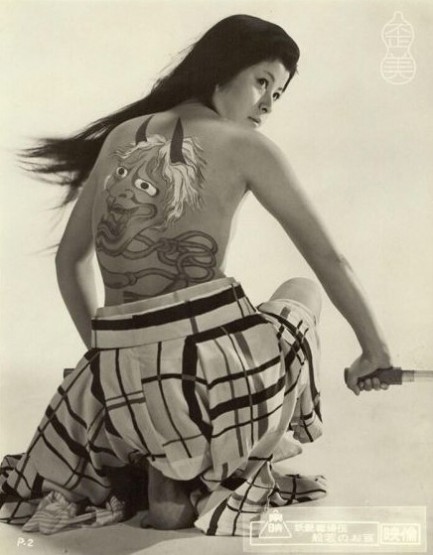 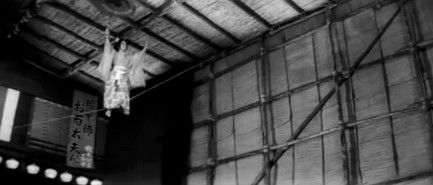 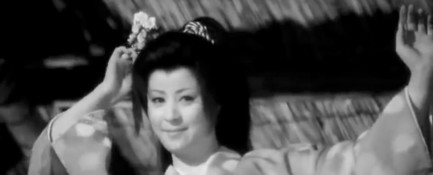 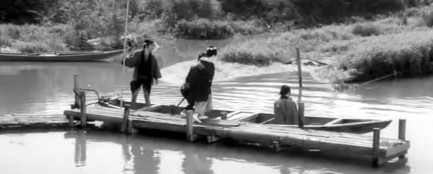 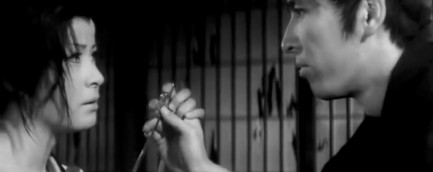 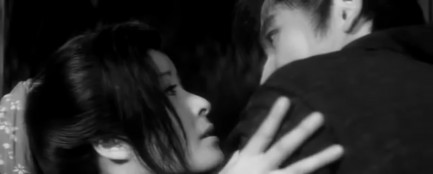 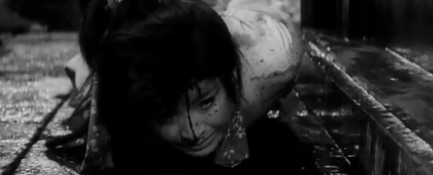 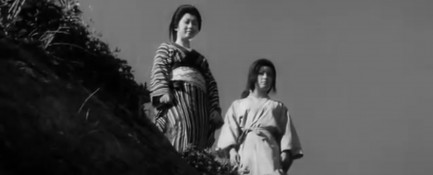 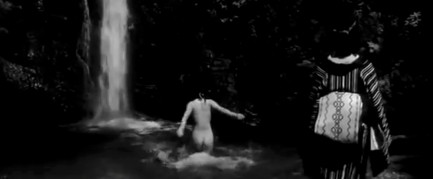 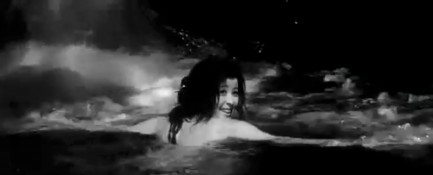 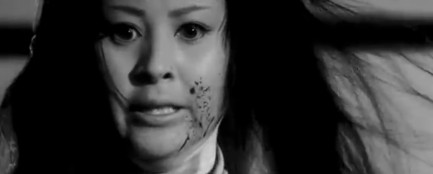 
 The gangs that couldn’t shoot straight. 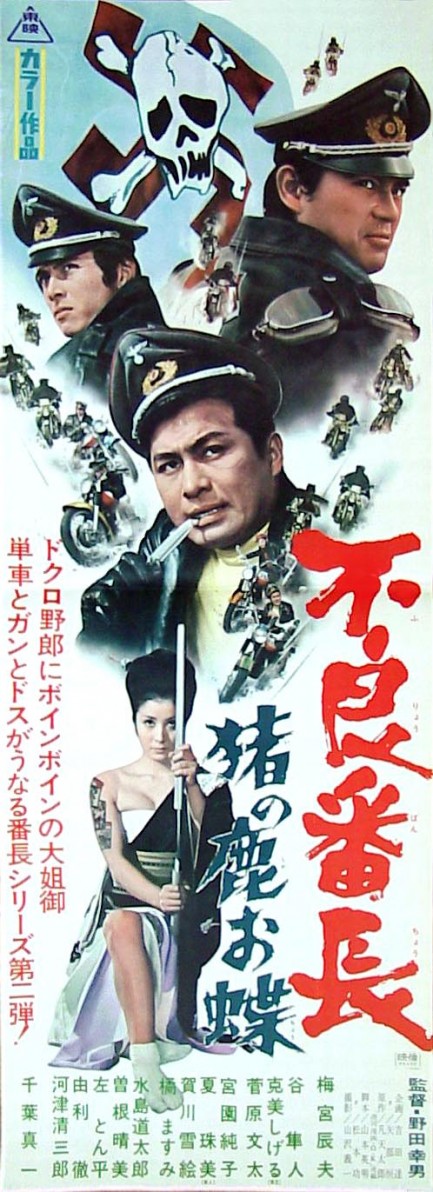
Furyô banchô: Inoshika Ochô, aka Wolves of the City, aka Wolves of the City: Ocho the She-Wolf was a significant hole in our Japanese actioner viewing résumé, but we solved that by watching the film a few days ago. In short, you get an amoral motorcycle gang in Nazi regalia pitted against evil Yakuza, with the tide eventually turning when the legendary hellion Ocho the She-Wolf teams up with the gang. The movie looks great. Yukio Noda’s direction—for the most part—is a marvel. He frames shots with six, seven, sometimes even a dozen interacting characters spread across the screen, yet it all seems effortless. Modern directors don’t seem remotely interested in using shots like these anymore, which is a shame, but it may also be a function of today’s screenwriters choosing to limit the number of characters who interact simultaneously. In any case, this is one thing we loved about the movie and we’ve shared some images of this technique below.
But Wolves of the City is a mixed bag. It relies upon numerous violent set pieces, but where the dialogue sequences feel so carefully thought out, the action is pure Keystone Kops. Because Noda continues framing large numbers of actors in single shots, his performers seem more intent upon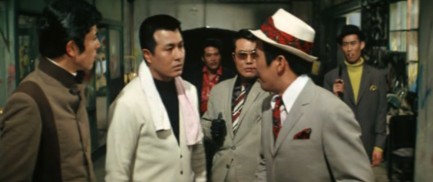  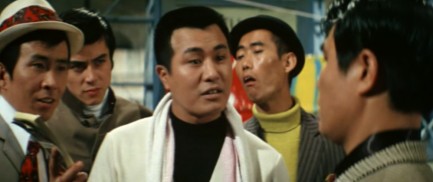 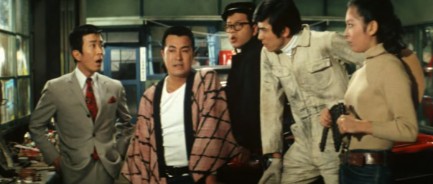 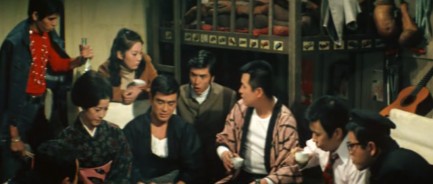 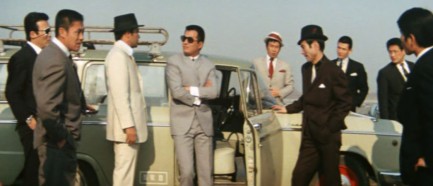 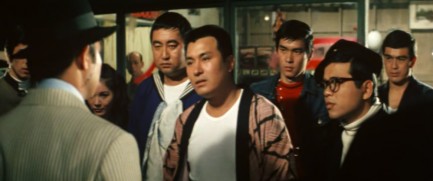 hitting their stage marks than making these confrontations look realistic. They reach their required positions in the scenes, but these hardened gangsters handle pistols and machine guns as if they were rubber snakes, dealing a major blow to what should be the visceral thrill of such moments. By packing the screen during the gunfights Noda forces the audience to accept that nobody can successfully shoot anyone from five feet away. It feels very bang-bang-you’re-dead amateurish, complete with wounded gangsters clutching their chests, spinning around, and falling to the floor. hitting their stage marks than making these confrontations look realistic. They reach their required positions in the scenes, but these hardened gangsters handle pistols and machine guns as if they were rubber snakes, dealing a major blow to what should be the visceral thrill of such moments. By packing the screen during the gunfights Noda forces the audience to accept that nobody can successfully shoot anyone from five feet away. It feels very bang-bang-you’re-dead amateurish, complete with wounded gangsters clutching their chests, spinning around, and falling to the floor.
In the end the plot ushers us through various deals, deceptions, and shootouts, and you finally get the inevitable throwdown between the bikers and the Yakuza. This is the most unlikely sequence of all, with bikers motoring around none too swiftly inside a confined warehouse while still miraculously being missed by a hailstorm of screaming lead. But by now we know what we’re going to get and we just have to go with it. At one point Ocho puts out a gangster’s eyes and archly informs him (as if he can hear through the head-splitting pain), “You’re the seventeenth victim of Ocho of Inoshika’s eye attack!” This movie does attack the eyes rather beautifully, and if you look past the Vaudeville antics of the action scenes you may enjoy it. The panel length poster at top is rare, and as far as we know it’s the only one of its kind to be seen online. Furyô banchô: Inoshika Ochô premiered in Japan today in 1969. 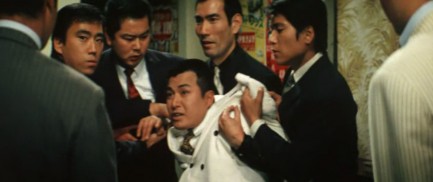 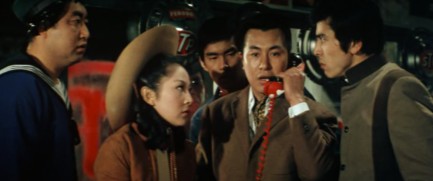 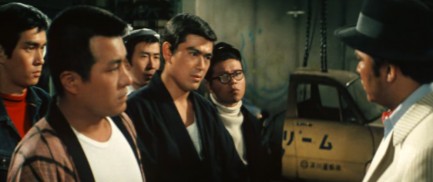 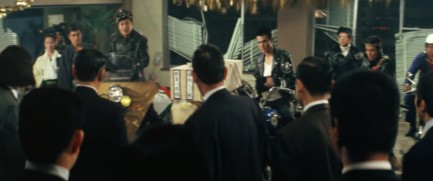 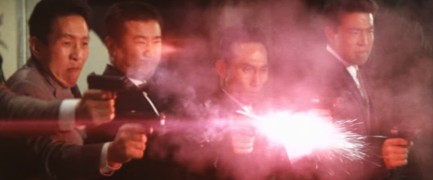 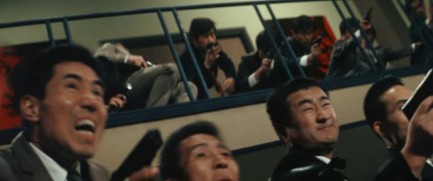
|
 |

The headlines that mattered yesteryear.
2003—Hope Dies
Film legend Bob Hope dies of pneumonia two months after celebrating his 100th birthday. 1945—Churchill Given the Sack
In spite of admiring Winston Churchill as a great wartime leader, Britons elect
Clement Attlee the nation's new prime minister in a sweeping victory for the Labour Party over the Conservatives. 1952—Evita Peron Dies
Eva Duarte de Peron, aka Evita, wife of the president of the Argentine Republic, dies from cancer at age 33. Evita had brought the working classes into a position of political power never witnessed before, but was hated by the nation's powerful military class. She is lain to rest in Milan, Italy in a secret grave under a nun's name, but is eventually returned to Argentina for reburial beside her husband in 1974. 1943—Mussolini Calls It Quits
Italian dictator Benito Mussolini steps down as head of the armed forces and the government. It soon becomes clear that Il Duce did not relinquish power voluntarily, but was forced to resign after former Fascist colleagues turned against him. He is later installed by Germany as leader of the Italian Social Republic in the north of the country, but is killed by partisans in 1945.
|

|
|

It's easy. We have an uploader that makes it a snap. Use it to submit your art, text, header, and subhead. Your post can be funny, serious, or anything in between, as long as it's vintage pulp. You'll get a byline and experience the fleeting pride of free authorship. We'll edit your post for typos, but the rest is up to you. Click here to give us your best shot.

|
|

























 hitting their stage marks than making these confrontations look realistic. They reach their required positions in the scenes, but these hardened gangsters handle pistols and machine guns as if they were rubber snakes, dealing a major blow to what should be the visceral thrill of such moments. By packing the screen during the gunfights Noda forces the audience to accept that nobody can successfully shoot anyone from five feet away. It feels very bang-bang-you’re-dead amateurish, complete with wounded gangsters clutching their chests, spinning around, and falling to the floor.
hitting their stage marks than making these confrontations look realistic. They reach their required positions in the scenes, but these hardened gangsters handle pistols and machine guns as if they were rubber snakes, dealing a major blow to what should be the visceral thrill of such moments. By packing the screen during the gunfights Noda forces the audience to accept that nobody can successfully shoot anyone from five feet away. It feels very bang-bang-you’re-dead amateurish, complete with wounded gangsters clutching their chests, spinning around, and falling to the floor.









































































